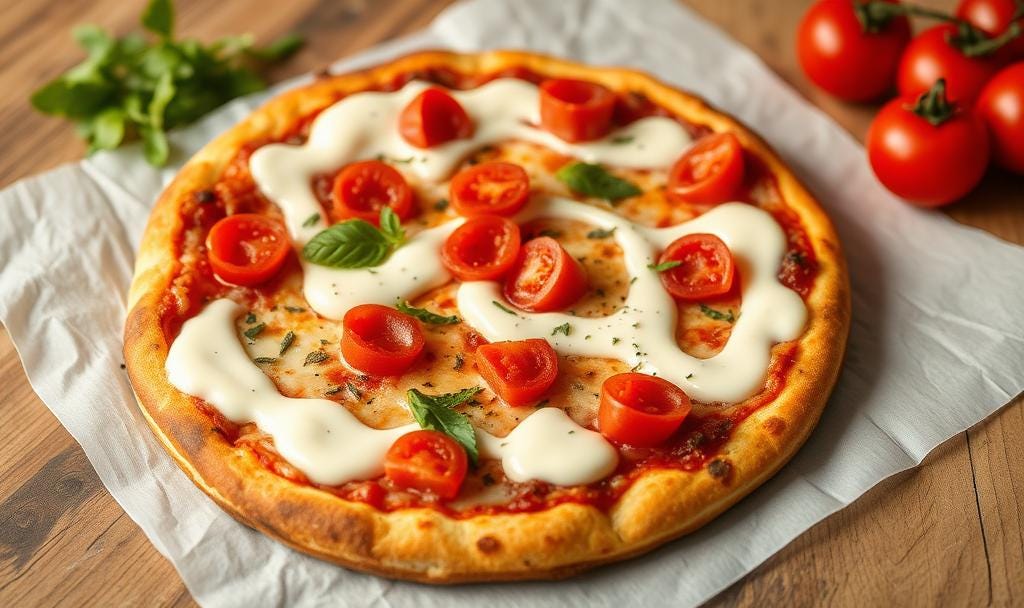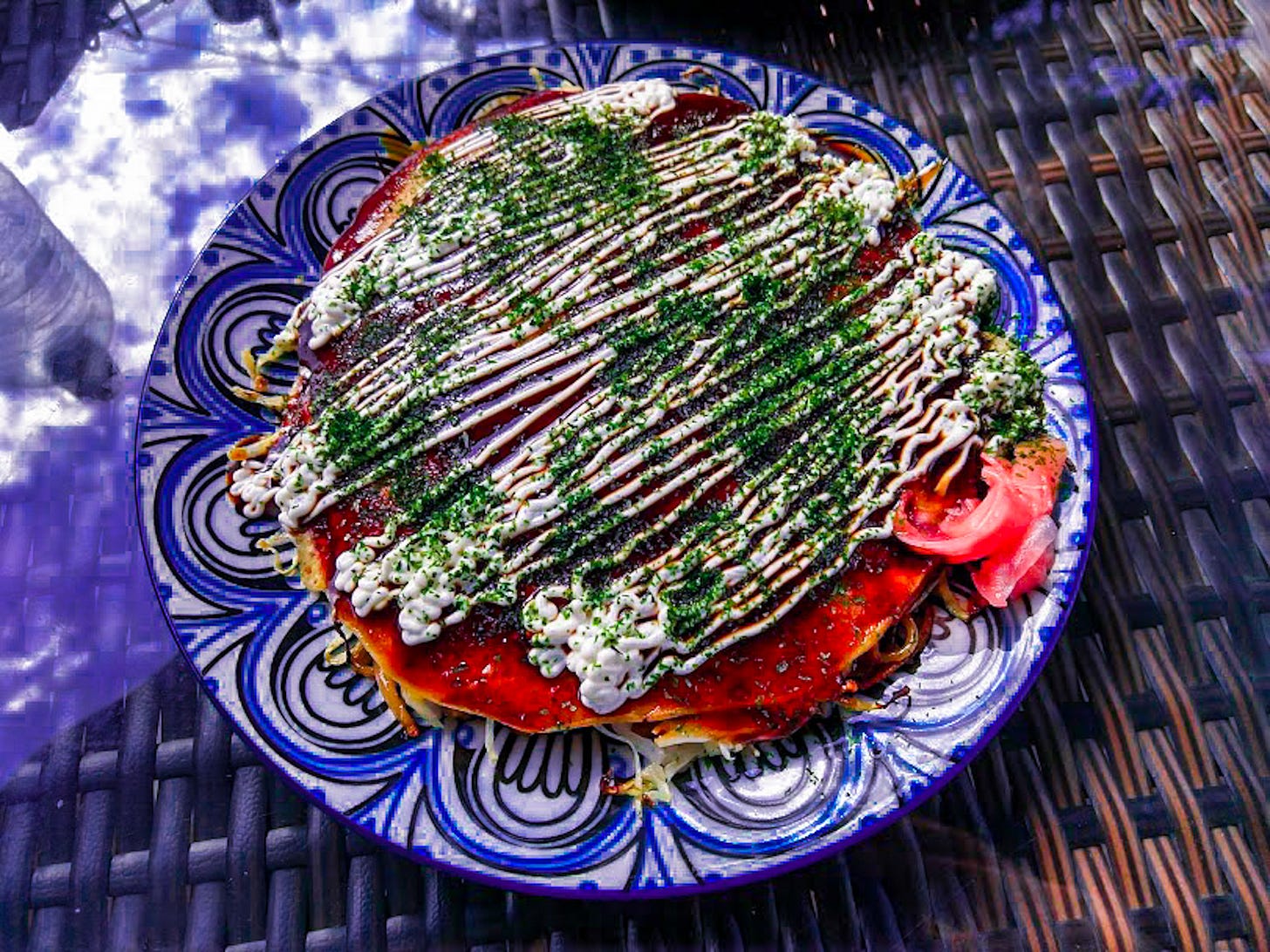Like Napoleon, Mayonnaise Should Have Stayed in France
This slimy — but unfortunately very popular — condiment is wreaking culinary havoc around the world.
For the audio version of this article, read by the author, go here.
During our first year of nomading in 2018, we lived in Bansko, a small town in the mountains of Bulgaria. And one day, we ordered pizza at a little shop around the corner from our apartment.
When it was ready, I went to retrieve it, only to have the owner grab a condiment bottle labeled “МАЙОНЕЗ” that she began to squeeze on top of my pizza.
Fortunately, I understand Russian, and knew that this Bulgarian was about to squirt mayonnaise all over my food for some bizarre reason.
“NYET! NYET!” I shouted, waving my hands.
She stared at me, uncomprehending. I didn’t want mayonnaise on my pizza?
But she was the crazy one here. Mayonnaise on pizza? Yuck.
I’ve always disliked the stuff. It’s a condiment with the texture of slime, and the words “viscous,” “congealed,” and “gelatinous” are frequently used to describe it.
And that’s by people who like it.
Besides, pizza doesn’t need improvement. Adding mayonnaise to Italy’s signature dish is like putting clown makeup on Michelangelo’s David.
But why had she tried to desecrate my pizza this way in the first place? Did she hate Americans? Or was this some leftover relic of the Soviet Era? Had Stalin hoarded all the cheese or tomato sauce, forcing Bulgarians to use — shudder — mayonnaise as a pizza topping?
It wasn’t long before Brent and I discovered that slopping mayonnaise onto pizza was widespread throughout Eastern Europe — a part of the world that I had been starting to really like but was now starting to think should be returned to Russia.
There is some dispute over the origin of mayonnaise — whether the Spanish or the French “invented” it, but the French probably deserve the most credit.
Or blame, if we’re being accurate.
In 1756, a French military chef created it during an invasion of Spain when he realized he had no cream for a sauce made of eggs and cream. Instead, he whipped oil and egg yolks together, called it mahonnaise after the port of Mahón, and history’s greatest culinary menace was born.
It turns out the only thing more dangerous than a French general is a French whisk.
Sadly, Bulgaria was only the beginning of my introduction to the horrors of how mayonnaise is used worldwide to commit culinary crimes.
The following year, we were in Tbilisi, Georgia, which has fantastic non-mayonnaise-based foods. But we both love Asian food, so when we spotted a Japanese woman preparing Japanese food from a food truck, we were super excited.
I liked the look of something she was making: okonomiyaki, a kind of crispy Japanese pancake.
It wasn’t until the nice lady delivered my food that I got a better look at exactly what I had ordered.
The okonomiyaki didn’t have just a touch of mayonnaise.
It was slathered in it, iced like a cake, spackled with it like a bad Dolly Parton impersonator.
I peered at it more closely, wondering if the Japanese lady had tried to hide something under all of that goo. Bits of her murdered husband, which she was now cleverly trying to dispose of?
Or was this something she did for Georgian tastes?
A quick Google search told me that, no, this was a pretty typical presentation of okonomiyaki even in Japan. Apparently, the Japanese liked this horrible concoction.
I hesitantly took a bite.
There were no bits of dead hubby. But it was weirdly sweet and goopy, and I gagged.
Foodies love to talk about “mouthfeel.” This one made my mouth feel like puking.
I tried to scrape off the heaps of mayo, but too much had already seeped into the pancake, rendering what I had renamed okonomi-yucky inedible.
Google also told me the Japanese have their own hugely popular brand of mayonnaise called Kewpie.
Yes, after the creepy dolls that became popular in the first part of the 20th century — because nothing entices customers to eat food products like weirdly disturbing mascots.
Kewpie mayonnaise is often described as being more “custardy” than regular mayonnaise.
Which I guess is better than being more “congealed, viscous, or gelatinous.” But not much better. As far as I’m concerned, the only thing that should be more “custardy” is custard.
The greater point is that I couldn’t finish eating my okonomiyaki — a word that I now think translates into: “Fooled you! Japanese palates aren’t as refined as we made you think!”
Look, I’m not saying mayonnaise has absolutely no uses — a dollop on a turkey sandwich is acceptable. And I hear it can make your dog’s coat extra shiny.
After those first terrifying mayonnaise encounters in Eastern Europe, Brent and I kept traveling the world, and sadly, I quickly discovered that an insane love for this repulsive condiment has spread far beyond France and even Eastern Europe.
Incidentally, did you know that the Plague also originated in France?
(I just made that up. But it feels true.)
Mexicans ruin their lovely roasted corn by slathering it with mayonnaise.
The Turks often drench their wrapped “döner kababs” with the stuff.
The Swedish have Smörgåstårta, a heavily layered “cake” filled with toppings such as shrimp, salmon, ham, eggs, and cucumber, all mixed with disgustingly copious amounts of mayonnaise.
And every time I order a hamburger anywhere in the world, I have to request “no mayonnaise,” lest it arrive swimming with it. Honestly, that’s pretty much true of any sandwich these days, which is often booby-trapped with the stuff.
In a sane world, potato salad would only be made with delicious Dijon mustard instead of something resembling squid snot.
Sadly, however, the tentacles of Big Mayo now reach almost everywhere.
Look, I know I’m being culturally insensitive, and five years ago, this essay may have gotten me canceled and publicly flogged.
Plus, I’m American, and we deep-fry Twinkies, so why should anyone listen to me?
But deep down, you know that I’m right.
In the end, I think mayonnaise is like Napoleon Bonaparte. When he first rose to prominence in France after the French Revolution, he did a lot of good. He brought stability to the country, wrote the Napoleonic Code, and created a central bank.
But what started with law and order ended with Waterloo — and I don’t mean ABBA’s version.
Mayonnaise — or is that “mahonnaise?” — is fine in France. But everywhere else?
Non! Man the barricades! Let them eat mayo in Paris! But not in Rome! Or Sarajevo!
Except Belgian French fries, which admittedly do pair nicely with mayonnaise.
Then again, Belgium is just France without Paris, Monet, or the Côte d'Azur — so my point still holds true.
I’d probably better stop before I get into more trouble than I already am.
Note: This was inspired by
’s recent newsletter about “œuf mayo,” a popular French dish. I will try it when I next visit France because David has forgotten more about food than I’ll ever know.Michael Jensen is a novelist and editor. For a newsletter with more of my photos, visit me at www.MichaelJensen.com.








Mayonnaise on pizza? Disgusting. However, mayonnaise is one of my very favorite foods and I always feel a little sorry for people who don’t like it. Homemade mayo in France can be absolutely delicious on many things. But in the US, Duke’s in the south and Hellman’s (best foods) everywhere else… one of the best things to eat all summer is juicy tomato sandwich on often white but really any kind of bread with plenty of mayo is something I look forward to all year. I don’t eat bacon anymore but mayo on a BLT? Heaven. I also have an incredible recipe for cole slaw I make in summer that is mayo based… most Cole slaw is disgusting made with sugar and milk but people freak out when they taste mine… secret is mayo among several other things. My Swedish friend loves banana on pizza. Also gross but I guess it depends on what you grow up with. I also love béarnaise and hollandaise which are egg and butter instead of egg and oil. None of it good for you but can’t imagine life without them!
I don't know how mayonnaise evolved into the stuff that comes in toothpaste tubes in Europe, but I made my own once, with one egg, a bit of olive oil, and some Dijon mustard, and it was really tasty!